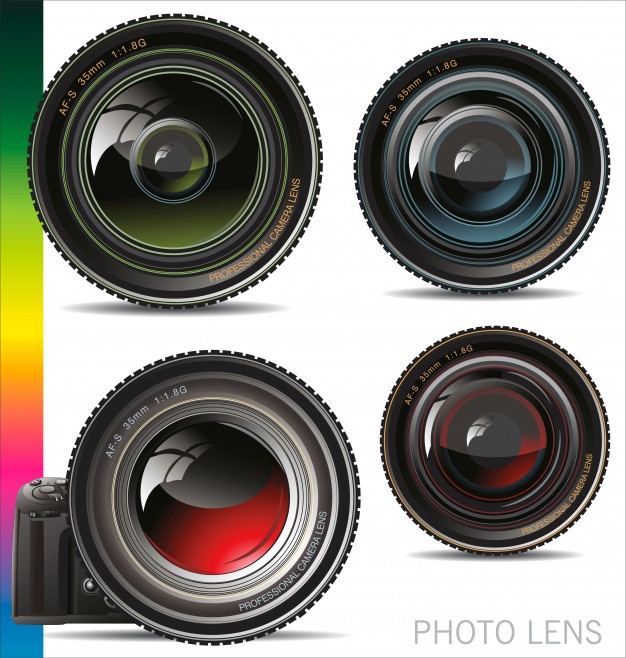Photography is, basically, a way of saving memories for the future. But for some, it is an art of capturing beauty in small moments. They are the professional photographers, equipped with their photography cameras. One of the most important and sensitive parts of today's cameras is their lenses. Once you own a camera, the confusion between choosing different lenses for clicking an absolute masterpiece begins. It is an issue which bugs most beginners in the field of photography. Let's solve this confusion once and for all.
Fundamentals of a camera lens
Before jumping into the choosing part, it is better to see an overview of how lenses work. A Camera lens consists of several different lens fragments which work in synchronization with a common task of directing the rays of light on the digital sensor present behind the lens, to create an image with minimal flaws. Every camera aims to create a realistic picture and lenses are the first element of the camera which begins the process of image creation. Now, the differences in lenses come mainly through different focal lengths they have. Focal length is the distance present between the image sensor and the lens when you focus on an object. This focal length is stated in millimeters and changes with different zoom settings. Focal length changes the view angle of the lens and thus the wideness or narrowness of an image depends on it. This is how a camera lens works in a nutshell.Types of lenses
Coming on to the types of lenses, DSLR cameras (widely used by photographers) have quite a variety of lenses available for different circumstances. There are various lens varieties for mastering every photography challenges. Each variety is available at different budgets based on their quality, but their purpose remains the same.- Standard kit lenses: These are the normal lenses that come pre-installed on your DSLR. These can also be bought separately from photography websites or stores. These are normal lenses which create pictures similar to what human eyes see. The angles of view of these lenses are similar to our eyes. They come in 25mm to 135 mm focal lengths. But their focal lengths are fixed (no zooming). Standard lenses are basic ones, and you usually have to carry other lenses along with it.
- Zoom lenses: These are uber-cool lenses with a wide range of focal lengths. One lens can have a focal range of 24-300mm which means you can zoom in on each of the focal lengths in between this range. These are extensively used for outdoor photography, wedding photography, and fashion photography. The only drawback being a high aperture, which requires well-lit surroundings or appropriate photography lighting. Be prepared to loosen up your pockets for working zoom lenses to their best.
- Wide angle lenses: As the name suggests, a wide angle lens have a wider view of the surroundings. This has nothing to do with zoom. It can just create images with a wider field of view. They come at a lower focal length ranges because of lower the focal length, higher the view angle. You can grab these between a range of 14mm- 35mm. Wide angle lenses produce distortions on the edges sometimes, but that can be eliminated with editing. They are great for aerial photography. Drone cameras are usually equipped with wide angle lenses.
- Telephoto lenses: These come in fixed focal lengths and also in zooming ranges. The difference is that these are used for images of very far objects, like really far. With great focal lengths like 600mm, photographers use these lenses planet/star photography. They are also used in sports photography, and they are super expensive. For a general photographer or a beginner, these may not be very essential to own.
- Macro lenses: These lenses are used to capture life-size images of tiny objects. These lenses have the specialty of producing ultra-focused images of objects at a macro distance, but lose their clarity over larger distances. These are useful lenses for Nature photography, jewelry photography and product photography. A Macro lens is considered an essential accessory for aspiring photographers.


